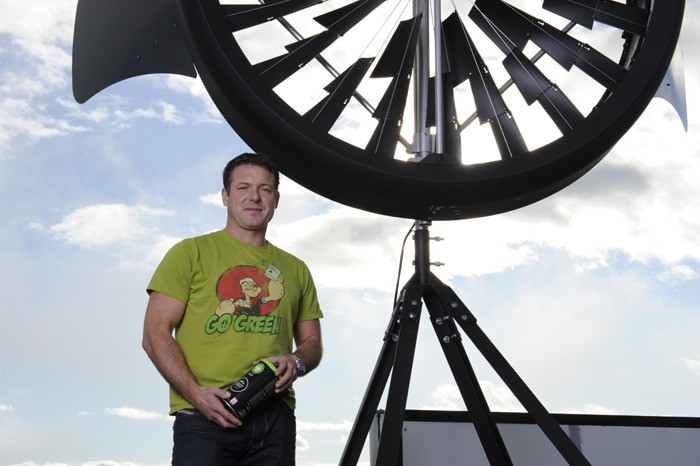Editor’s note: This is the third and final story in a three-part series examining energy supply systems in the Columbia Valley.
A community energy system based on solar or wind may not be in the immediate future for valley residents, but more and more individuals are making the leap to renewable energy technologies for their own personal use.
Take Nancy Lorass as an example. Lorass is a dual resident, with a home in Calgary as well as one in Columere Park in Invermere since the 1990s. She is currently collecting quotes from various suppliers to cost out what it would take to go more green. In Calgary, her plan is to supplement her grid power with solar, and for her B.C. home, she is interested in becoming as self-reliant as possible with BC Hydro strictly as a backup power source.
“If you think back to something like drinking and driving, it became a problem and then there was all this publicity nationwide, and pretty soon we created a culture of people who are much more aware, young people are approaching it much differently than our parents did, so I have the same philosophy about energy,” said Lorass.
She’s looking at both wind and solar options for her house in Columere Park, which tends to be quite a windy place, and is exploring the possibility of setting up a battery bank so that, in theory, she would only need to draw on BC Hydro during peak times.
“If more people do that, we’re going to start to take the strain off the power system,” said Lorass. “I think we’re at a time in the world where people have to start changing the way they think about it instead of taking it for granted; I think people need to start looking at what can they do.”
She said she’s in a position right now to put the money forward and looks forward to having a little more influence with respect to her own energy generation.
“To me, it’s a step — if more people did that it would become more common place,” she said, “and hopefully encourage other people to do the same and increase the awareness.”
Bill Swan has been working to increase awareness ever since he started installing solar energy systems over six years ago. As Greenman Sustainable Solutions, he works mostly with solar thermal hot water heating, which can be used for both domestic hot water and space heating, but installs a fair bit of solar photovoltaic as well.
His work can be found all over the valley, in schools, homes, and commercial and public buildings.
“For commercial outlets it’s really very effective because typically restaurants, the commercial sector, is busy during the day when the hot water is being made, so there’s a really strong correlation between production and use which is what you’re trying to do with renewables,” Swan said. For residents, it’s still a good option as in the valley about nine months of the year are covered, with 100 per cent of domestic water covered certainly for six months.
“To me, the revolution in home and commercial heating is going to come from making our buildings far more energy efficient in terms of their insulation envelope and the way they interact with the natural environment,” he said. “Homes of old… (aren’t) going to cut it. We have to radically transform how we are building buildings to make them much more energy efficient and demand less energy to function then you can start to address that heating curve with technologies like renewable energy and solar and so on.”
The challenge now, he said, is to retrofit existing buildings to make them more enery efficient, and Swan recommends that homeowners check how much heat their house is losing before trying to determine how much energy they need to make.
In 2010, Greenman Sustainable Solutions facilitated the installation of a solar hot water heating system at the Kicking Horse Coffee Café in Invermere. Today, Kicking Horse Coffee president Leo Johnson is counting down the days before the ten new wind turbines newly installed on the roof of his factory begin to power operations in the building. The installation of the solar hot water heater for the cafe has already paid for itself, he said, and the turbines will pay for themselves in about five years.
“I feel that companies should be responsible for their waste and energy consumption and I do my best to implement initiatives that help us manage our waste and reduce our energy cost,” Johnson told The Valley Echo in an email. “It’s more than about the money. To me it’s about doing our part and showing people and companies that anyone can participate.”
